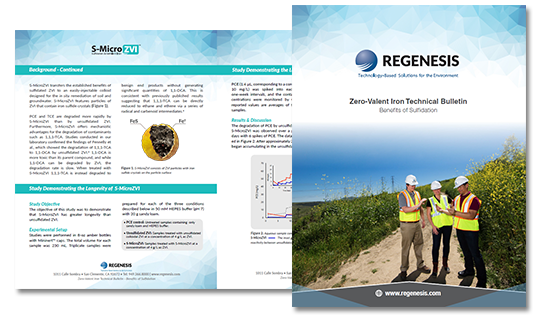Thank you for requesting ZVI Technical Bulletin 2.0
Background
Zero-valent iron (ZVI) is a widely-used amendment capable of facilitating the electrochemical reduction of chlorinated contaminants to benign end products (Equations 1 and 2). However, the efficiency of ZVI treatments are reduced by the competing reaction with water (corrosion) to produce molecular hydrogen (Equation 3). When ZVI reacts with water, the particle surface becomes passivated with oxide and hydroxide species, and this corrosion of the surface limits further reaction between the ZVI and the targeted contaminants. Thus, the development of ZVI materials that react preferentially with target contaminants over water is desirable.


 Americas
Americas Europe
Europe Français
Français Deutsch
Deutsch Italiano
Italiano Español
Español



